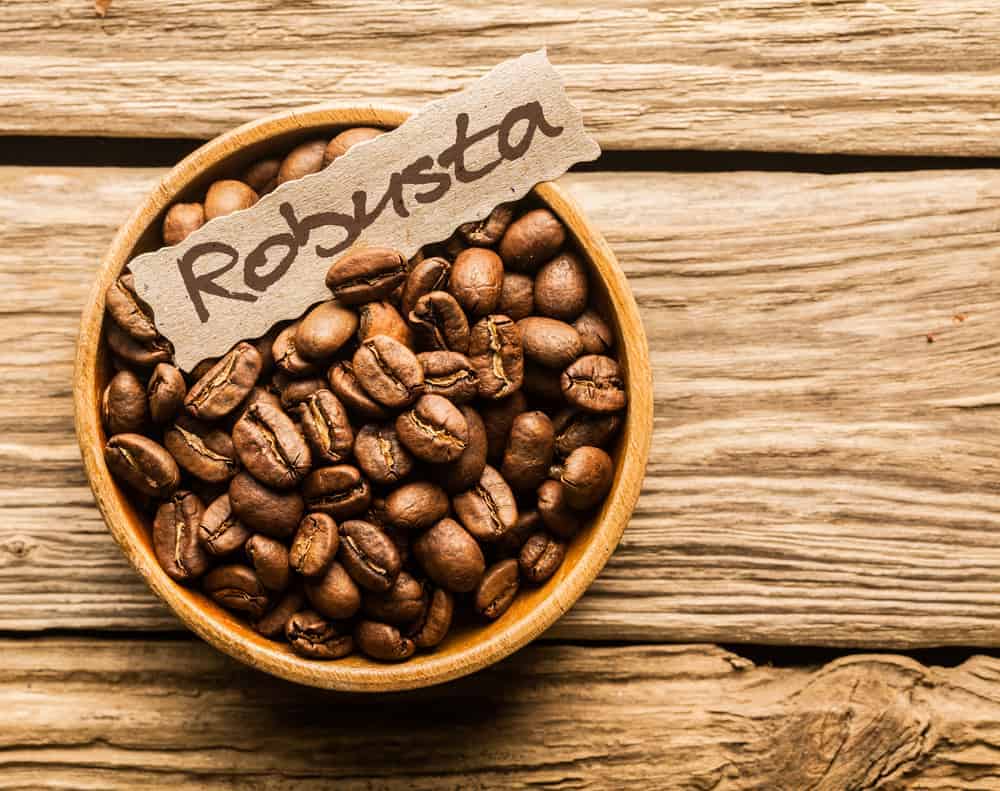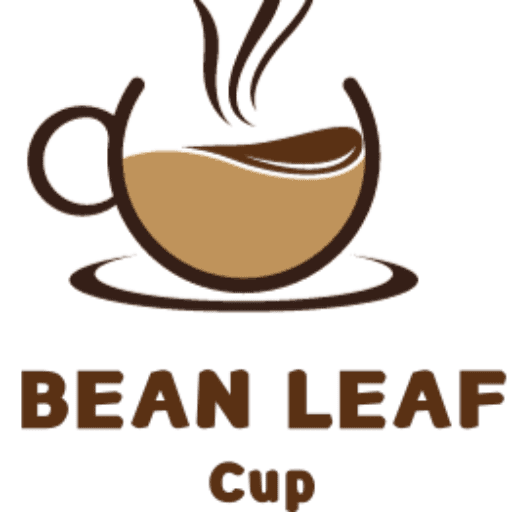Do you start your mornings with a hot cup of coffee? I’m with you! The fact is that 3 out of 4 Americans drink coffee every day. [1]
But have you ever wondered where that magical bean that fuels your daily caffeine fix comes from?
Coffee beans, you see, aren’t all the same.
There’s a delightful variety of coffee beans cultivated worldwide, each with its own set of preferences when it comes to growing conditions. Some favor high altitudes, while others crave a bit more rain.
And they each bring their own unique flavors, aromas, and characteristics to the table.
In this article, I’ll walk you through the four main types of coffee beans and explain what makes each type of bean special, what flavors and aromas you can expect, and the popular coffee regions they come from.
4 popular types of coffee beans
When it comes to coffee, we all have our preferences. Some like it black; some must have cream and sugar. But have you ever stopped to think about the beans themselves? Not all coffee beans are created equal.
There are actually four main varieties used in the coffee world: Arabica, Robusta, Liberica, and Excelsa. Each has its own distinct taste, aroma, and characteristics.
Arabica is the most popular; you’ll find it in most coffee shops and grocery stores. It has a smoother, sweeter flavor with tones of fruit and berries. Robusta is more bitter with a strong punch of caffeine. Good for espresso or blending.
Liberica and Excelsa are less common. Liberica has a smoky, woody profile, and Excelsa is bright and fruity. They’re typically blended with other beans.
Now, let’s take a closer look at each type of bean!
1. Arabica Coffee Beans

“Speaking of top-notch coffee, Arabica beans take the crown. They make up about 60% of global coffee production and are favored by specialty roasters and baristas alike. Roasts made from Arabica beans are considered more high-quality and pricier.
Why is Arabica considered the crème de la crème? It comes down to taste.
What do Arabica Coffee Beans taste like?
Arabica has a more complex flavor profile compared to other coffee varieties. It has a sweet, almost fruity acidity with hints of sugar cane and berries. On the other hand, Arabica beans tend to be more acidic than Robusta.
You can expect notes like chocolate, nuts, and citrus, depending on where the beans were grown. The mouthfeel is silky and round. Arabica lacks the harsh bitterness of Robusta and has half the caffeine, making it perfect for sipping black.
Beyond flavor, Arabica beans grow best at high altitudes in rich volcanic soil. Places like Colombia, Ethiopia, and Costa Rica produce exceptional Arabica coffees.
The challenge is cultivation; Arabica plants are susceptible to pests and disease. But the extra effort pays off in that sweet, nuanced cup.
Next time you brew a smooth, balanced pot, you likely have Arabica beans to thank. Their mellow acidity and crisp finish set the gold standard.
Though the taste can vary widely based on region, you’ll find most coffees feature Arabica in the blend.
2. Robusta Coffee Beans

If you like your coffee strong and bold, then Robusta beans are probably right up your alley. Robusta is the most used type of bean, the kind you often find at the grocery store.
Robusta packs a punch when it comes to caffeine—nearly double the amount of its rival, Arabica. But it’s not just about the buzz. Robusta has its own unique flavor profile, too.
What do Robusta Coffee Beans taste like?
These beans have an earthy, grain-like taste with a hint of chocolate and nuts. But they can also come across as harsh or rubbery if not processed properly.
A good Robusta will be smooth with a rich aroma. Bad Robusta tastes burnt and bitter. Not ideal for black coffee; it needs taming!
The high caffeine content and deep flavor make Robusta perfect for espresso blends where you need that jolt.
This type of bean also holds up better when you add cream and sugar, unlike Arabica, which tends to change the flavor.
It also creates a thick crema on top when pulled as a shot. In milk-based drinks, the boldness can cut through the dairy flavors. But take it black, and its roughness may pucker your mouth.
Robusta grows heartily at lower altitudes, like in Africa and Indonesia, and is resistant to diseases. So, it’s easier to cultivate than the finicky Arabica, which makes it cheaper, too.
3. Liberica Coffee Beans

Liberica coffee beans are one of the lesser-known players in the coffee world, but they have a unique taste all their own. Here’s a conversational overview of these exotic beans:
Hailing mainly from the Philippines (Kapeng Barako) and parts of Southeast Asia. The strong and bold flavor of Liberica coffee has earned it the colloquial nickname “barako” in the Philippines, which aptly means “manly” in their local language.
Liberica is a tall, sturdy coffee plant that can endure hot climates. But more interesting is the flavor. Liberica beans produce a cup with distinctive woody and smoky notes, almost like tasting a forest fire. Some even pick up hints of flowers or fruit.
What do Liberica Coffee Beans taste like?
The taste is often described as “bold” and “gutsy,” with a rum-like, molasses undertone. There is nothing meek or mild about Liberica! They pack a powerful punch, though not nearly as much caffeine as Robusta. The flavor tends to be on the darker, earthier side.
Due to their assertive nature, Liberica beans are best used in blends or dark roasts. They can hold their own against chocolate and spice flavors. And the smokiness plays well in espresso. But drink it black and get ready for a wild ride—this ain’t your average morning Joe.
Liberica will never dominate coffee consumption like Arabica and Robusta. But for the adventurous coffee lover, seeking out this rare bean is a must. It provides a taste of the exotic from small regional farms.
4. Excelsa Coffee Beans

Excelsa coffee beans are the mysterious strangers of the coffee world. They aren’t widely used, accounting for only 7% of the world’s coffee consumption.
Though lesser known, they lend a unique tart, fruity flavor when blended with other beans.
The Excelsa coffee plant grows in Southeast Asia (particularly in the Philippines and Vietnam) and parts of Africa. It’s similar in appearance to the Liberica plant but produces smaller beans.
What do Excelsa Coffee Beans taste like?
Flavor-wise, Excelsa is quite distinctive. It has a delicate, tea-like tartness with a hint of fruit, almost like cranberries or currants.
Some coffee experts describe Excelsa as having a lemony or even vanilla note at times. The taste is bright and vivacious.
However, Excelsa beans lack body and complexity on their own, so they are best used in blends. A touch of Excelsa can really lift an espresso or dark roast, giving it a sparkling acidity.
Due to the small yields and unpredictable growing patterns, Excelsa is not produced in large quantities globally. That means tracking down 100% Excelsa coffee may prove challenging. But as a blending bean, it adds a refreshing pop that livens up any cup of joe.
What Kind of Coffee Bean Should You Choose?
With so many options out there, it can be tough to decide what kind of coffee bean to choose for your perfect cup. Here are some tips on picking beans based on your preferences:
If you like a smooth, balanced coffee that’s easy to drink black, go for 100% Arabica beans. The mellow, slightly sweet flavor with hints of fruit and chocolate is crowd-pleasing. Just stay away from bitter dark roasts, which can mute Arabica’s nice acidity. A medium roast will give you a lively flavor that’s not overpowering.
For a stronger caffeine kick, Robusta beans have nearly twice as much as Arabica. They taste bold and earthy, with a grain-like bitterness. Blending a bit of Robusta into an espresso blend adds crema and a flavor punch. But drink it solo, and the harshness needs taming with cream and sugar.
If you crave something exotic, try beans with Liberica or Excelsa mixed in. They offer enticing, smoky, woody notes and bright fruitiness, respectively. Though harder to find, they lend flair to regional blends.
Your taste is unique, so experiment to find your match. Taste the beans at the roaster or cafe if you can. Checking the roast date helps ensure freshness, too. With so many bean choices out there, the perfect coffee awaits!
Conclusion
And there you have it—the four main types of coffee beans broken down! Arabica and robusta dominate the scene but don’t sleep on Liberica and Excelsa if you’re looking to spice things up.
I don’t know about you, but understanding the difference between these bean types has changed my morning cup of joe game completely. Now, I geek out over the unique flavor profiles and aromas that each variety brings to the table. Coffee is a wonderfully complex world!
Which bean type is your go-to? I’m an Arabica girl myself; I love those sweet, fruity notes. But I have to admit, sometimes you need a good, strong cup of Robusta to get your engine revving.
Thanks for stopping by and learning about the differences between these four incredible types of coffee beans with me! Now go brew something tasty. You’ve earned it!

